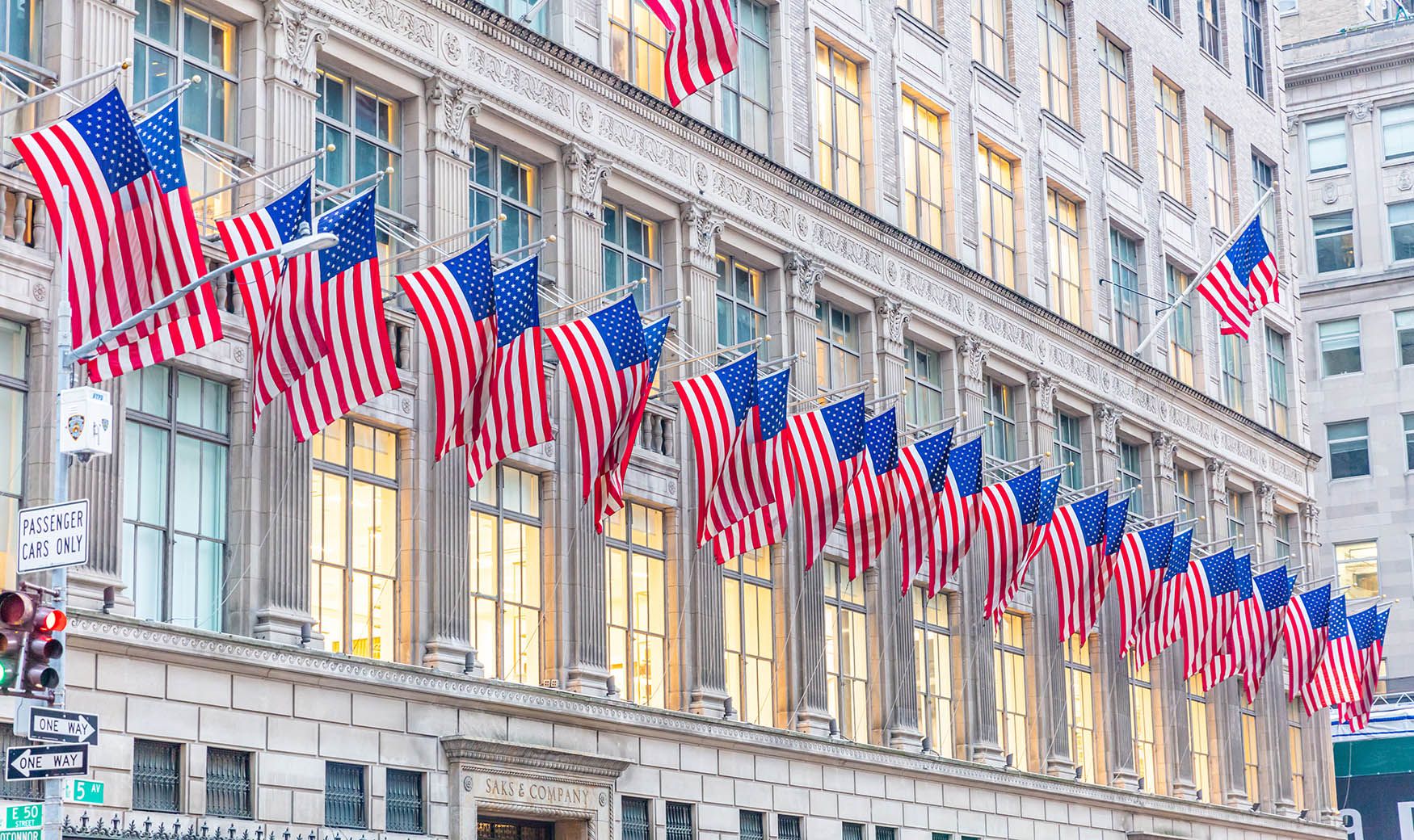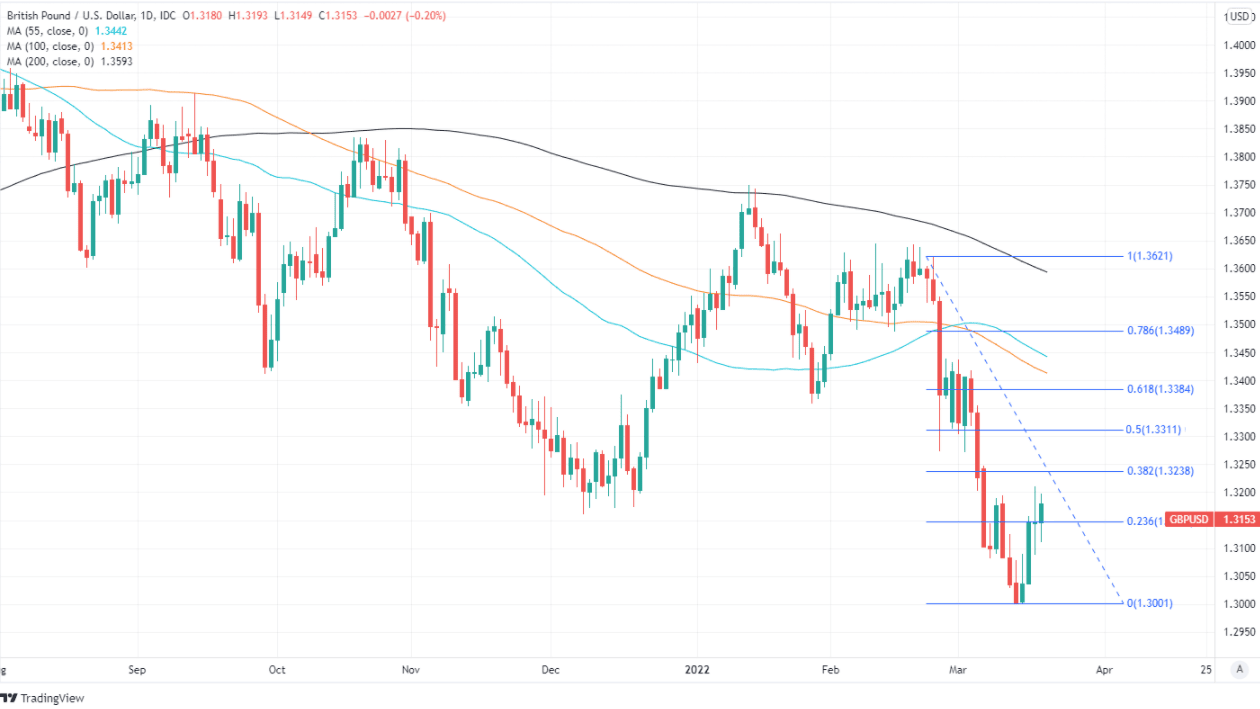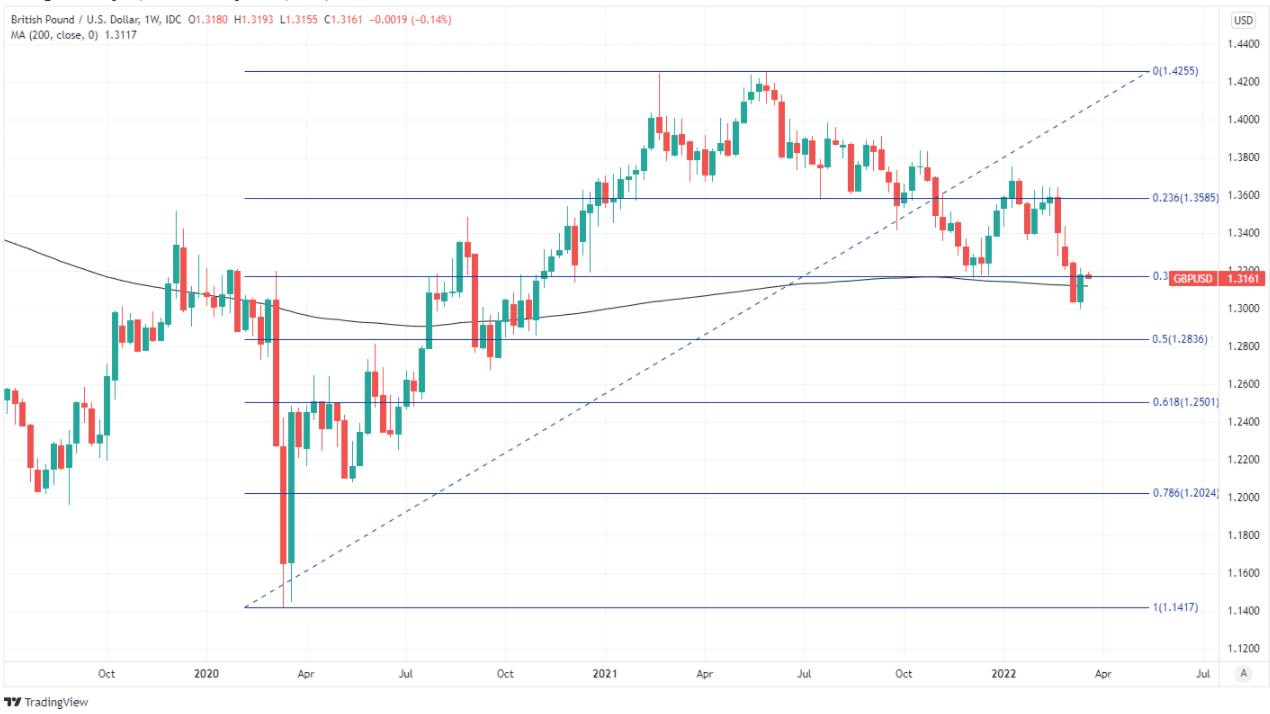GBP/USD Rate Week Ahead Forecast: Shifting Fed, BoE Dynamic Limit Scope for Recovery
- Written by: James Skinner
-
- GBP/USD upside limited, risks deeper losses ahead
- As Fed gears up to pull ahead & BoE turns cautious
- Fed speeches, BoE remarks & UK CPI data in focus

Image © Adobe Images
The Pound to Dollar exchange rate rebounded smartly from near three-month lows last week but its scope for a further recovery is likely to be limited, while the risk of additional losses remains due to a watershed change in Federal Reserve (Fed) policy and a more cautious stance at the Bank of England (BoE).
Pound Sterling attempted to draw a line under losses sustained in a month-long sell-off against the Dollar last week as global markets rebounded strongly in price action that many analysts attributed to optimism about peace talks between Russia and Ukraine as well as government spending in China.
GBP/USD rallied from near December’s lows to enter the new week back above 1.31, although with appetite for Sterling potentially dampened by a cautious inflection in the BoE’s outlook for the economy, inflation and interest rates, it could struggle to extend that recovery over the coming days.
“The contrast in tone between the Fed and Bank of England could not be starker. While the Fed is dealing with an overheating economy, the BoE is dealing with negative supply shocks and “bad inflation,” says Athanasios Vamvakidis, head of FX strategy at BofA Global Research.
“With three major central bank decisions now behind us, the market is likely to revert to trading headline risk and geopolitics. But we believe the BoE rate decision will put to bed any hopes that the BoE will hike rates in larger (50bps) increments,” Vamvakidis and colleagues said on Friday.
Above: Pound to Dollar rate shown at daily intervals with Fibonacci retracements of mid-February decline indicating possible areas of technical resistance to any recovery by Sterling. Click image for closer inspection.
- GBP/USD reference rates at publication:
Spot: 1.3145 - High street bank rates (indicative band): 1.2685-1.2777
- Payment specialist rates (indicative band): 1.3027-1.3060
- Find out about specialist rates and service, here
- Set up an exchange rate alert, here
The BoE placed a question mark over the outlook for interest rates last week when indicating that surging energy prices and the resulting squeeze on incomes could ultimately serve as a substitute for increases in Bank Rate during the months ahead.
“Markets have moved away from pricing in a 50bps hike at one of the remaining 2022 meetings, and year-end pricing has fallen by almost 30bps since Wednesday, but GBP is set to remain on the backfoot as further rate hike bets get taken out,” says Jaun Manuel Herrera, a strategist at Scotiabank.
“Steep inflation that may reach double digits in autumn may motivate markets to maintain some of these bets, but a cost-of-living crisis that depresses growth and employment will keep the BoE from hiking excessively—so we foresee more downside in the pound toward 1.30,” Herrera also said Friday.
The BoE’s warning of risks to its forecasts for growth, inflation and Bank Rate stood in contrast to the mood of Fed Chairman Jerome Powell, who said last Wednesday that the U.S. economy is likely robust enough to still grow at a strong pace even as interest rate rises sharply during the months ahead.
{wbamp-hide start}
{wbamp-hide end}{wbamp-show start}{wbamp-show end}
The Fed raised its interest rate for the first time since before the coronavirus crisis and Chairman Powell acknowledged that March’s dot-plot of Fed policymakers’ forecasts suggests it is possible, if not likely, that U.S. interest rates will be lifted to somewhere between 2.5% and 3% in the next year.
“We think that the dovish pivot, and hawkish Fed shift, imply a push below 1.30 for GBPUSD in Q2. Currently, high-frequency fair value sits near 1.32, suggesting GBP trades near fair value,” says Mark McCormick, global head of FX strategy at TD Securities.
“Even so, a range of factors (BoE repricing, higher oil, rising stagflation risks, diverging monpol and growth expectations) point to a deteriorating backdrop and underperformance against the likes of USD and EUR,” McCormick also warned in a Thursday research note.
The Fed is potentially set to lift U.S. interest rates further in relation to its inflation target than many other major economy central banks including the BoE, while Chairman Powell kept open the prospect last week of the Fed lifting rates faster than financial markets expect during the months ahead.
Above: Pound to Dollar rate shown at weekly intervals with Fibonacci retracements of 2020 recovery indicating possible areas of medium-term technical support for Sterling. Shown alongside GBP/USD’s 200-week moving-average.
Secure a retail exchange rate that is between 3-5% stronger than offered by leading banks, learn more.
The prospect of a faster-moving Federal Reserve is an upside risk for the U.S. Dollar during the months ahead and will be back in focus again this week when Chairman Jerome Powell is set to speak publicly about the economic outlook on Monday before participating in a panel discussion on Wednesday.
“With the US more exposed to demand-driven inflation, a confident Fed should keep the dollar in the ascendancy. We see a greater risk of GBP/USD trading 1.28 than 1.34 over the coming weeks,” says Chris Turner, global head of markets and regional head of research for UK & CEE at ING.
Monday’s address at the National Association for Business Economics Annual Economic Policy Conference in Washington is the highlight of the week ahead for the U.S. Dollar, although Powell will also participate on Wednesday alongside BoE Governor Andrew Bailey in a virtual panel discussion titled "Emerging Challenges for Central Bank Governors in a Digital World" at the Bank for International Settlements Innovation Summit.
Both events will be listened to closely by the market while Wednesday also sees UK inflation figures for February released alongside the latest budget from HM Treasury, although in light of the BoE’s growing caution about the growth outlook, it’s possible that Sterling will be less responsive to the inflation data this time out.
“The GBP’s short-lived uptrend from its test of 1.30 on Monday has lost momentum and price action over the past ~24hours points to the GBP’s decline on the day extending to a test of 1.31. Resistance after the mid-1.31s is 1.3175/85 followed by 1.3200/15,” Scotiabank’s Herrera says.







